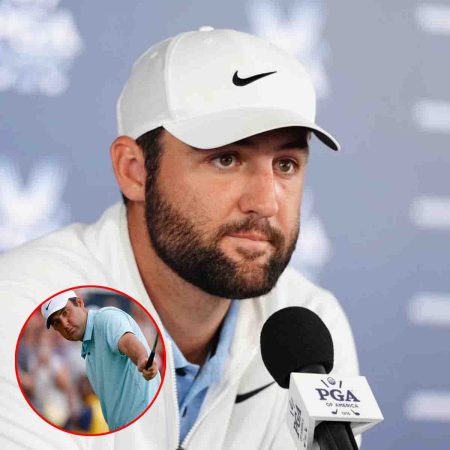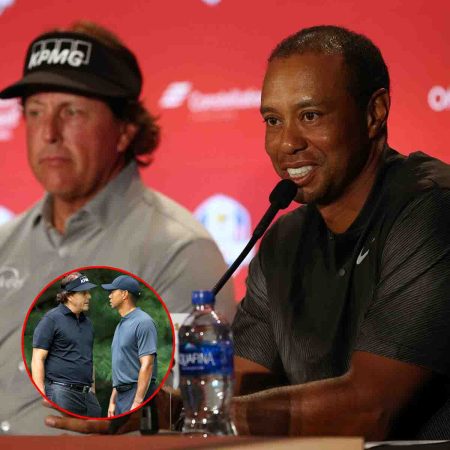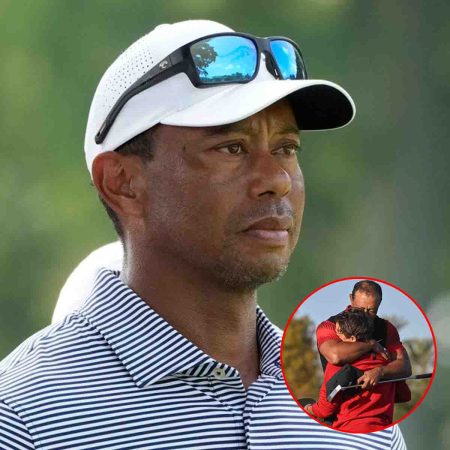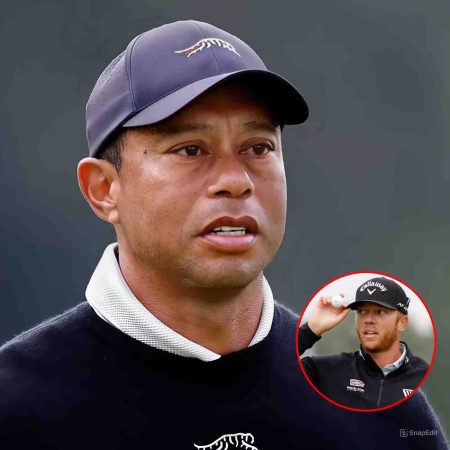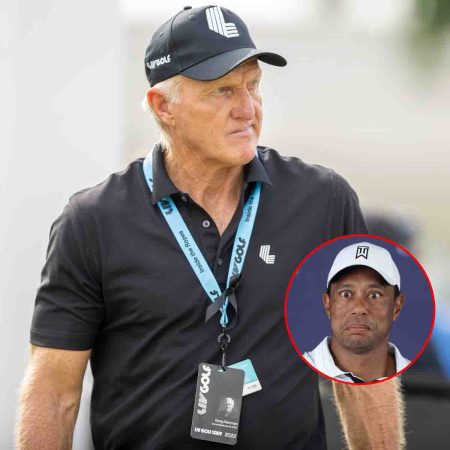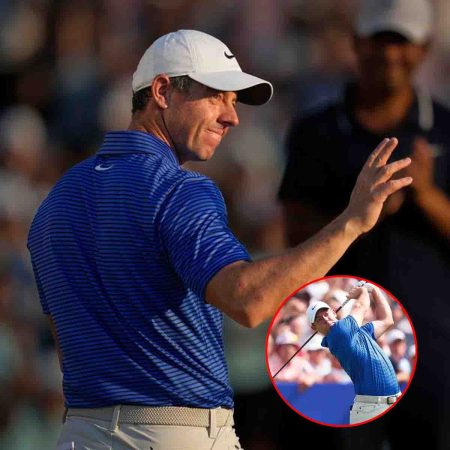Despite being a seasoned veteran in the world of MMA, Jon Jones has never faced a championship challenge as significant as the one before him now. He has encountered numerous golden opportunities in the past, but this one stands out as unique.
The longtime light heavyweight king fights Ciryl Gane in the main event of UFC 285 this Saturday in Las Vegas, with the winner leaving T-Mobile Arena with a heavyweight title around their waist. As if Jones changing divisions isn’t intriguing enough, he’ll also be fighting for the first time in over three years.
Fighters immediately jumping into title fights after long layoffs is rare, but several UFC stars have done it to varying degrees of success. Here, we’ll take a closer look at previous championship comeback performances as well as the circumstances that led to these fights being booked.
Let’s start with Georges St-Pierre and Randy Couture, two of MMA’s most respected champions, who both pulled off what Jones is attempting to do this Saturday: Become a two-division champion.

The Champ-Champs
Georges St-Pierre
Why the immediate title shot?
Unequivocally one of the pound-for-pound GOATS, Georges St-Pierre set a standard for excellence in the welterweight division that still hasn’t been matched. He won two UFC titles, successfully defending his championship nine straight times in his second reign while becoming one of the promotion’s most proven box office draws.
Where did he go?
Chael Sonnen: It’s Time for Jake Paul to Boot Tommy Fury
Chael Sonnen discusses why it’s time to cut ties with Tommy Fury for the latest Jake Paul fight, the future of Dillon Danis, if Jon Jones will beat Ciryl Gane, the Conor McGregor vs. Michael Chandler fight, the new season of TUF, his issues with Jim Gray, what happened with judge Douglas Crosby, Dana White’s promotion of UFC 284, and more.
After narrowly defeating Johny Hendricks via split decision at UFC 167 in 2013 for his ninth defense, St-Pierre admitted that he was burnt out. He announced a break from competition, with no set date for his return. It turned out that he wouldn’t fight again for four years.
In 2017, St-Pierre’s return was made official, but at 185 pounds to face champion Michael Bisping, with the fight eventually scheduled for UFC 217 at Madison Square Garden.
How did he do?
St-Pierre showed plenty of flashes of his championship form, matching up well with Bisping in the standup, which he had to do because Bisping had St-Pierre’s wrestling scouted. When St-Pierre took the fight to the mat, it was actually Bisping who took advantage as he bloodied St-Pierre with elbows from bottom position.
A short left hand from St-Pierre changed everything. The blow dropped Bisping, and St-Pierre followed up with a furious ground attack before choking Bisping unconscious.
As amazing as that moment was, the aftermath was disappointing. St-Pierre vacated the middleweight title a month later due to a bout of ulcerative colitis and later retired for good in 2019.

Randy Couture
Why the immediate title shot?
No list of championship comebacks would be complete without Randy Couture, who pulled it off twice.
Couture has one of the more complicated histories on this list, as he twice returned to immediately fight for the heavyweight title — once after leaving the promotion in 1997 and then returning in 2000, and then again after his first retirement in 2006, which lasted a little over a year.
Let’s take a look at how his credentials looked ahead of his comebacks.
2000:
- UFC heavyweight champion
- UFC 13 heavyweight tournament winner
2006:
- 2x UFC heavyweight champion
- 2 straight successful heavyweight title defenses
- 2x UFC light heavyweight champion
- Interim UFC light heavyweight champion (beat Tito Ortiz to unify titles)
Where did he go?
Couture’s initial departure from the UFC came soon after winning his first heavyweight title. Already 34, he vacated the title to pursue fights overseas, and after a 2-2 stint in Japan, he returned to the octagon and was granted a title shot against Kevin Randleman.
His second comeback title shot came after he supposedly hung up the gloves. At 42, Couture lost a light heavyweight championship trilogy bout to Chuck Liddell in February 2006, then announced a retirement. It wasn’t long before he got that itch and 13 months later he returned to face Tim Sylvia at UFC 68.
How did he do?
The Randleman and Sylvia fights couldn’t have played out more differently, but the result was the same: Couture becoming champion again.
With the younger, more explosive Randleman (for the record, “more explosive” applies to every matchup Randleman was part of), Couture had to deal with being out-wrestled for two rounds before deploying that Greco-Roman expertise to turn the fight around in the third. He took Randleman down, worked to mount, and didn’t stop punching until Big John stepped in.
The Sylvia fight looked like an even steeper climb on paper, because Couture retired as a light heavyweight and hadn’t actually fought at heavyweight for over four years before UFC 68. Sylvia, while not technically the world’s best heavyweight — Fedor Emelianenko existed, after all — had put together a couple of title defenses and won six straight fights, justification for Couture to be the underdog in this matchup.
Seconds into the fight, Couture rocked Sylvia with a right hand and “The Maine-iac” never recovered. They went the full five, but Couture dominated every round en route to a sweep of the scorecards.

The Rock Stars
Conor McGregor
Why the immediate title shot?
Conor McGregor skyrocketed to fame from his first night inside the octagon, capitalizing on memorable moment after memorable moment to eventually claim titles at featherweight and lightweight. He’s MMA’s No. 1 box office draw, so no amount of inactivity was keeping him out of the title picture.
Where did he go?
After crushing Jose Aldo and Eddie Alvarez, McGregor passed on defending either of his belts, instead choosing to pursue a massive crossover boxing bout with Floyd Mayweather What once was a pipe dream came to fruition in August 2017 as Mayweather beat McGregor via 10th-round TKO in one of the biggest events in combat sports history.
McGregor was more famous than ever, even in defeat, and when it was time to go back to the UFC, a lightweight title shot against hated rival Khabib Nurmagomedov awaited him.
How did he do?
McGregor managed to take a round off of the indomitable Nurmagomedov, but that was about it. For the majority of their contest, Nurmagomedov out-wrestled, out-struck, and outworked McGregor before putting him away with a neck crank in Round 4. The post-match brawl that Nurmagomedov started was arguably more memorable than the fight itself.
That was back in 2018 and McGregor has yet to fight for a title since, though a win in his upcoming The Ultimate Fighter coaches’ clash with Michael Chandler will put him right back in the championship picture.

Ronda Rousey
Why the immediate title shot?
Before McGregor, Ronda Rousey made history as one of MMA’s first true mainstream stars as well as a pioneer for women in the business. She had one of the most thrilling championship runs ever with six straight defenses, creating of a highlight reel that feels more surreal as time goes on.
Where did she go?
Rousey’s championship reign came crashing down hard when she ran into Holly Holm. Though Rousey was a heavy favorite, plenty of pundits gave Holm a chance, and the former boxing champion more than lived up to the challenge as she vaporized Rousey with a head kick.
And I mean “vaporized,” because Rousey disappeared from the public eye for months, which says as much about her ability to handle a loss as it does with how viciously spectators pounced on it.
How did she do?
If you watched the Holm fight and thought, “Hey, it could have gone worse?” Well, Rousey’s comeback fight went much, much worse.
For Rousey supporters out there, her UFC 207 run-in with Amanda Nunes was a nightmare as the new champion bulldozed Rousey in just 48 seconds. It was the last time Rousey fought. She’s since moved on to a highly successful WWE career after flirting with Hollywood.

The Survivor
Dominick Cruz
Why the immediate title shot?
The bantamweight roster isn’t what it is today without Dominick Cruz. “The Dominator” rattled off 20 wins in his first 21 fights, which included four straight successful title defenses across the WEC and the UFC. Even with the division now thriving, Cruz still has a strong case to be the 135-pound GOAT.
Where did he go?
No one on this list has lost more time to injury than Cruz.
In 2011, “The Dominator” was coming off of an impressive title defense over Demetrious Johnson (remember bantamweight D.J.?) and headed towards a TUF coaches’ dual with blood rival Urijah Faber. However, a torn ACL in his left knee put him on the shelf and started him on a miserable path of injuries that would stretch for the better part of the next five years.
A groin injury spoiled Cruz’s plans to return in 2014 and unify the belts with interim titleholder Renan Barao, then the spark he showed in a 61-second blitzing of Takeya Mizugaki later that year was quickly extinguished when Cruz tore his other ACL soon after.
Finally, in January 2016, Cruz was healthy enough to fight for the bantamweight title again, this time against T.J. Dillashaw at UFC Boston.
How did he do?
Did Cruz come back? Or was he never gone?
The bantamweight GOAT was at his evasive best in his clash with Dillashaw, producing several memorable moments where his herky-jerky movements had Dillashaw swinging at air. It was an incredibly tight matchup, with the fighters combining for over 700 attempted strikes and cutting a five-round pace that few could ever hope to match. In the end, Cruz eked out a split decision win.
I had it for Dillashaw and still do (not a robbery, by the way), not that it matters. Cruz reclaiming gold after never losing it in the cage remains one of MMA’s best comeback stories.

The Cheat
T.J. Dillashaw
Why the immediate title shot?
The other man in the bantamweight GOAT discussion, T.J. Dillashaw won UFC gold twice and successfully defended the belt three times across two reigns. Prime Dillashaw is probably the winner of any fantasy matchup at 135 pounds, but the reality of how his career played out isn’t that simple.
Where did he go?
After the loss to Cruz, Dillashaw went right back to his winning ways and two fights later he earned a shot at new champion Cody Garbrandt. This resulted in a succesful two-fight series for Dillashaw as he knocked out Garbrandt in Round 2 in their first encounter, and then needed less than a round to repeat the feat in their rematch.
Dillashaw then made a move to flyweight that was ill-fated, to say the least. His title challenge against Henry Cejudo in January 2021 ended in a 32-second TKO loss and two months later it was announced that he had tested positive for EPO. Dillashaw admitted to using the banned substance, relinquishing the title and going on to serve a two-year USADA suspension.
How did he do?
I’m bending the parameters a little with this entry because Dillashaw didn’t walk right into a title shot after coming back from his suspension. He actually fought Cory Sandhagen first, resulting in a controversial split decision nod for Dillashaw. However, a knee injury put Dillashaw out of action for another 15 months, so I’m bundling all of his mishaps together for the purposes of this discussion.
However however, one could argue that Dillashaw shouldn’t be here at all because he probably shouldn’t have attempted a comeback. At UFC 280, Dillashaw was given a shot against bantamweight champion Aljamain Sterling — and he crashed and burned, exposing a shoulder injury early in the fight that left him defenseless against Sterling’s wrestling. The bout was mercifully waved off in Round 2.
Dillashaw retired soon after, ensuring that the last three years of an otherwise outstanding career might go down as a damp squib.




